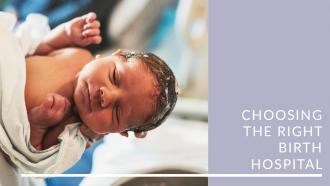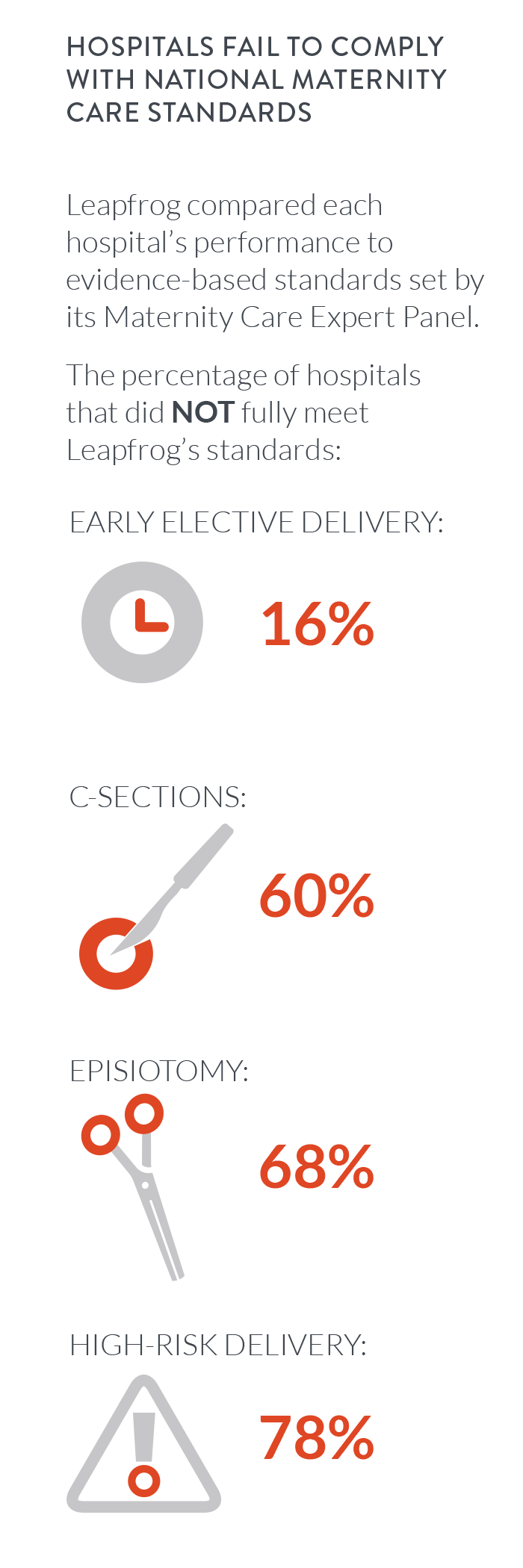
Today, The Leapfrog Group released its 2016 Maternity Care Report, an in-depth look at one of the leading causes of hospitalizations for privately-insured women ages 19 to 44. According to the report, as analyzed by Castlight Health, while there has been important quality improvements on episiotomies and early elective delivery rates by hospitals, many hospitals are still not meeting national performance targets for quality metrics.
"Families deserve to know how hospitals are doing, so they can make good decisions on where to give birth."
"Private employers, unions, states, and localities have long pushed for public reporting of these measures, because maternity care is so important to their members,” said Leah Binder, president and CEO of Leapfrog. “We believe families deserve to know how hospitals are doing, so they can make good decisions on where to give birth, and avoid unnecessary risks and expense to the mother and the baby.”
Key findings from the Maternity Care Report include:
-
At the majority of hospitals (68%), the episiotomy rate was too high: An episiotomy is a once routine incision made in the birth canal during childbirth that is now recommended only for a narrow set of cases. Leapfrog’s target for all hospitals is 5% or less.
SOURCE: Castlight Health analysis - Hospitals continue to perform too many C-sections: Leapfrog utilizes the endorsed NTSV C-section measure, and finds that at 60% of reporting hospitals, the C-section rate was too high, surpassing Leapfrog’s target rate of 23.9% for all hospitals. Variation is dramatic, ranging from a low as 10% to as high as 54% in one east coast city.
- Early elective deliveries continue to decline across the U.S.: Four out of five hospitals meet Leapfrog’s target of 5% for early elective deliveries – inductions or C-sections performed before 39 weeks gestation without medical necessity. A low early elective delivery rate indicates that the hospital is taking important steps to minimize risks to the mother and baby by delivering too soon.
- Additionally, the nationwide early elective delivery rate has dropped to a record low: The current nationwide average rate is 2.8%, a tremendous decrease compared to the average rate of 17% Leapfrog first reported in 2010.
- Many hospitals don’t have adequate experience with high-risk deliveries: Very low birth weight Infants born with complications are more likely to survive if their hospital has an experienced NICU on-site, yet 78% of hospitals performing high-risk deliveries do not meet Leapfrog’s standard.
"This report underscores the importance of understanding the risks associated with specific delivery choices and of improving the quality of care during birth for the wellbeing of both mothers and their babies,” said Kristin Torres Mowat, senior vice president of plan development and data operations at Castlight Health. “We look forward to continuing our work with The Leapfrog Group, to make available additional reports on important quality and safety measures at hospitals nationwide. Armed with more information and education, individuals will be empowered to make the best choices for their health and organizations can optimize the delivery of their healthcare benefits.”
Today’s report is the third in a series of five reports examining key quality and safety measures at hospitals nationwide based on data from the 2015 Leapfrog Hospital Survey of 1,750 U.S. hospitals and analysis provided by Castlight Health. The complete Maternity Care Report is available here.
Other publicly available resources include:
- Data on all measures, searchable by region or hospital via Leapfrog’s Hospital Survey Results
- More information on C-section rates by hospital and resources for patients and providers
